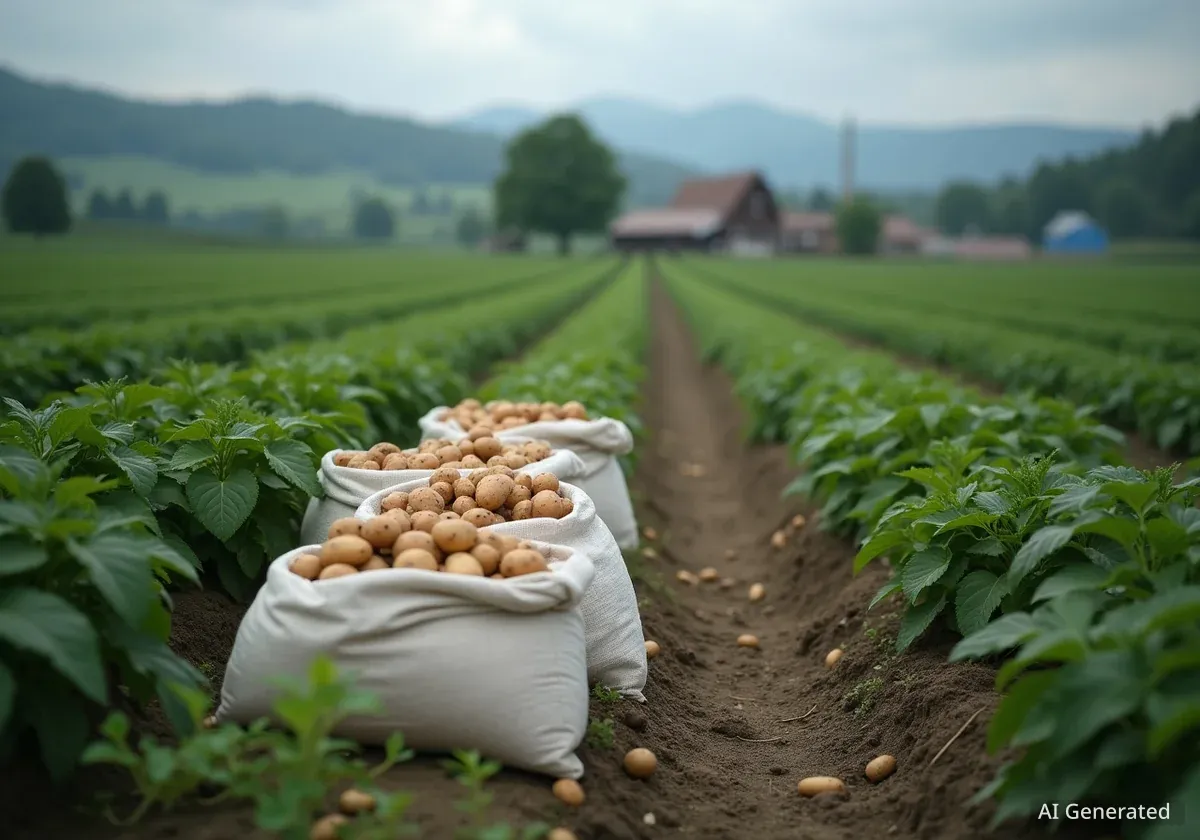Recent discrepancies in grain and oilseed crop estimates have raised questions within the Swiss agricultural sector. Initial reports suggested a decline in cultivation areas, leading to confusion among industry stakeholders. This situation highlights the need to understand the methods behind these crucial agricultural forecasts and how they can be improved for greater accuracy.
Key Takeaways
- Agristat, the Swiss Farmers' Union statistical service, creates all official crop estimates.
- Initial estimates rely on seed sales and farmer surveys, but later data from direct payment applications are critical.
- A recent "misinterpretation" of data led to an inaccurate May estimate for cultivation areas.
- Earlier access to federal and cantonal data is essential for more reliable and timely forecasts.
- Swissgranum and Agristat collaborate to ensure only one official harvest figure is published.
Who Is Responsible for Crop Estimates?
The responsibility for Switzerland's crop estimates is clear. Agristat, the statistical service of the Swiss Farmers' Union, performs all calculations. Agristat works on behalf of Swissgranum. Each year, they compile figures for the cultivation areas and harvest volumes of grains, oilseeds, and protein crops.
Swissgranum then publishes these reports. They also distribute the information to the industry through media releases. This ensures a unified message.
"There is only one common harvest estimate from Agristat and Swissgranum," states Stephan Scheuner, Director of Swissgranum. "Anything else is a misinterpretation." This clarifies the single source of official data.
How Are Crop Forecasts Developed?
These forecasts rely on several key data sources. First, Agristat considers seed sales. Second, they conduct sample surveys involving approximately 1,000 producers. Third, results from the federal farm structure survey are included. These core data points form the foundation of the estimates.
Fact: Data Inputs
- Seed sales data
- Surveys from ~1,000 farmers
- Federal farm structure survey results
- Climatic conditions during sowing
- Remaining seed stock
- Previous years' cultivation areas
Additional factors also influence the predictions. These include climatic conditions during sowing, any remaining seed stock, and cultivation areas from previous years. The accuracy of an estimate depends heavily on the available data.
The Challenge of Timely Data
A recent issue highlighted the importance of timely data. For the second estimate in May 2025, only the structural data from the Federal Statistical Office for 2024 and seed sales figures were available. Crucial AGIS data from the Federal Office for Agriculture arrived much later, specifically at the end of July. This AGIS data is based on farmers' direct payment applications.
After receiving the AGIS data, Agristat reviewed its May estimate. The review revealed that the projected development of cultivation areas was incorrect. The initial forecast did not match the actual figures.
"A misinterpretation had occurred here," Stephan Scheuner explained to BauernZeitung. This admission underscores the impact of incomplete or delayed information on early forecasts.
Context: Data Delays
The delay in receiving AGIS data, which is based on direct payment applications, significantly impacts the accuracy of early crop estimates. This data provides a more comprehensive picture of actual cultivation areas. Without it, initial forecasts are less precise.
Improving Estimate Reliability
The central question now is how to make these estimates more reliable. Stephan Scheuner believes the answer lies in improving data flows. He emphasizes the need for earlier access to information from federal and cantonal sources. This would allow Agristat to create more accurate preliminary estimates.
Scheuner suggests that provisional projections from the cantons could be a solution. "This should be possible in our opinion," he confirms. Earlier access to such data would enable Agristat to refine its estimates much sooner in the season.
The current schedule for these operations is tight. Agristat also conducts surveys to determine the yields of arable crops. A network of reporters, consisting of farmers, submits their yield data at the end of August and the end of October. This staggered reporting adds to the complexity.
Why Harvest Figures Are Not Released Sooner
Many farmers wonder why harvest volumes are not published earlier. The reason is the survey rhythm. Other Agristat data also appears in the Swiss Farmers' Union's cereal statistics during this period. The process requires careful coordination and data collection over time.
Ultimately, only one final figure is considered official. Swissgranum registers first buyers, such as collection points and mills. These entities report the quantities they have received. This information is essential for calculating actual harvest volumes.
This calculation happens in consultation with Agristat. For organic crops, Bio Suisse is also involved. Not all crops can be fully surveyed. In these cases, Agristat calculates harvest volumes using cultivation areas and average yields.
"Finally, the official harvest volumes, agreed upon by Swissgranum and Agristat, are published," Scheuner highlights. This process ensures that only a single, unified figure is released to the public and the industry.
This commitment to a single, verified number helps maintain clarity and trust within the agricultural market, despite the inherent challenges of data collection and forecasting.




